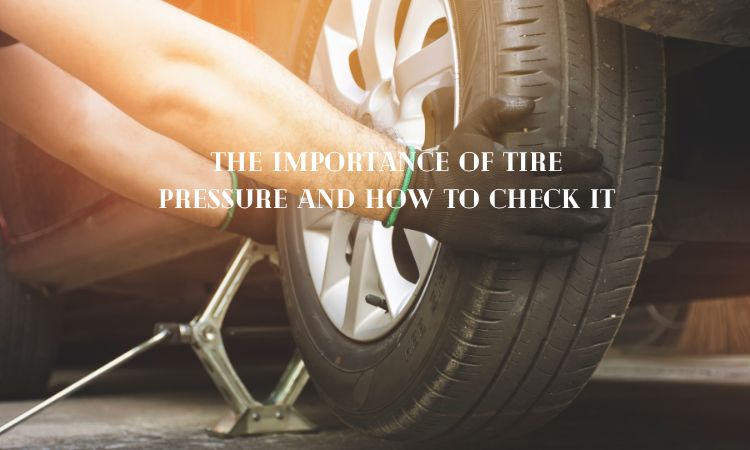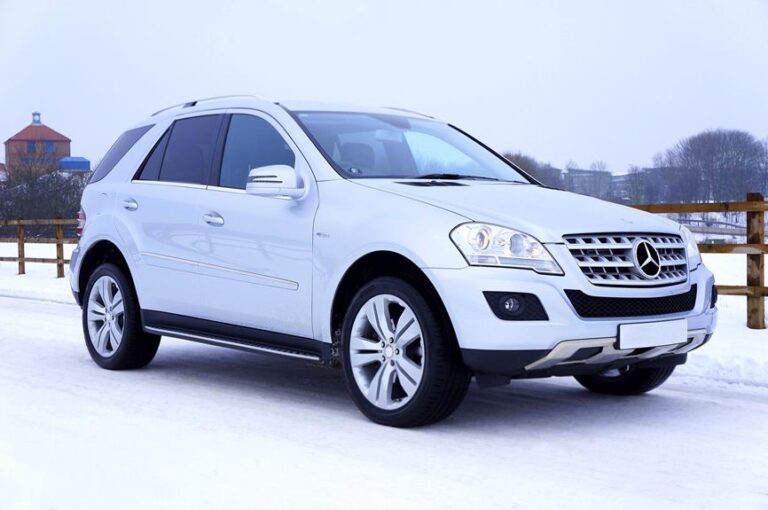Common Issues 4 Vehicle Tyres & How To Fix Themvehicle tires
It can be difficult to know when you need new vehicle tires for your vehicle. Here are some signs that it might be time for a change, Whether you’re looking for performance, comfort, or durability, we’ve got you covered.
1. Your tyres are bald or have very little tread left.
2. You’ve been driving on uneven or damaged roads and your tyres are showing signs of wear.
3. Your tyres are making strange noises or vibrating excessively.
4. Your vehicle is pulling to one side when you drive.
If you’re noticing any of these things, it’s time to start shopping for new tyres! Here are some tips to help you get the best deals:
1. Shop around! Compare prices at different tyre shops before making a purchase.
2. Ask about discounts! Many tyre shops offer discounts for cash payments or if you buy multiple tyres at once.
3. Check online! You can often find good deals on tyres by shopping online.
4. Don’t be afraid to haggle! If you think a particular price is too high, try negotiating with the salesperson.
Read: Tubeless Tire
following these tips, you’ll find the best deals on vehicle tyres! Compare prices from different sellers
There are a few things to consider when comparing prices from different sellers. The first is to make sure you are comparing apples to apples – that is, that you are comparing the same product from different sellers. The second is to consider the shipping costs – sometimes, a seller with a higher price may have lower shipping costs, which could offset the difference in price.
Finally, it is also important to consider the return policy – some sellers may have more generous return policies than others, which could save you money in the long run if you need to return an item.
The different types of vehicle tires and their benefits

There are a few different types of tires available on the market, each with its own benefits. All-season tires are a good option for those who don’t want to have to change their tires out every season. They provide good traction in both wet and dry conditions and can handle light snowfall. However, they may not perform as well in extreme weather conditions.
Winter tires are designed specifically for use in cold weather and snowy conditions. They have a deeper tread depth than all-season tires, which helps them grip the road better. Winter tires can also handle more extreme temperatures than all-season tires.
Off-road tires are designed for use on rougher terrain, such as dirt roads or trails. They have a deeper tread depth and wider tread width than regular passenger tires, which helps them grip the ground better. Off-road tires can also be used on paved roads, but they may not perform as well as other tire types.
There are four main types of tires – all-season, summer, winter, and all-terrain. All-season tires are the most common type of tire and can be used in a variety of weather conditions. Summer tires are designed for warm weather and provide good traction on dry roads. Winter tires are designed for cold weather and provide good traction on snow and ice. All-terrain tires are designed for off-road use and provide good traction on a variety of surfaces.
All-season tires are the most versatile type of tire and can be used in a variety of weather conditions. They provide good traction in both wet and dry conditions and can be used in both warm and cold weather. All-season tires are good.
How to pick the right size tire for your car
When it comes to picking the right size tire for your car, there are a few things you need to take into account. First, you need to know the make and model of your car. This will give you a good starting point for finding the right size tire.
Next, you need to consider the type of driving you do most often. If you do a lot of highway driving, you might want a different size tire than if you do mostly city driving. Finally, you need to think about the climate you live in. If you live in an area with a lot of snow and ice, you might need a different size tire than if you live in a warmer climate.
Once you have all of this information, you can start looking at tires. There are a few different ways to find the right size tire for your car. You can look in your car’s owner’s manual, or you can look online. You can also ask a salesperson at a tire store for help.
When it comes to choosing the right size tire for your car, there are a few things you need to take into account. The first is the type of vehicle you have. There are different-sized tires for different types of cars. The second is the size of the wheel. The third is the width of the tire. And the fourth is the height of the tire.
The type of vehicle you have will determine the size of the tire you need. For example, a sedan will require a different size tire than an SUV. The size of the wheel will also affect the size of the tire. A larger wheel will require a larger tire. The width of the tire is also something to consider. A wider tire will provide more traction and stability than a narrower tire. And finally, the height of the tire should be taken into account. A taller tire will provide better clearance and a smoother ride than a shorter tire.
When it comes to choosing the right size tire for your car, there are a few things you need to take into account. The first is the type of vehicle you have. There are different-sized tires for different types of vehicles. The second is the size of the wheel. The third is the width of the tire. And the fourth is the height of the tire.
The type of vehicle you have will determine the size of the tire you need. For example, a sedan will require a different size tire than a SUV. The size of the wheel will also affect the size of the tire. A larger wheel will require a larger tire. The width of the tire is also something to consider. A wider tire will provide more traction and stability than a narrower tire. And finally, the height of the tire should be taken into account. A taller tire will provide better clearance and a smoother ride than a shorter tire.
There are a few things you’ll need to know in order to pick the right size tire for your car. First, you’ll need to know the make, model, and year of your car. Once you have that information, you can consult your car’s owner’s manual or do a quick online search to find out what size tires your car takes.
Once you know the size of tire your car needs, you’ll need to decide on the type of tire. There are all-season tires, winter tires, and summer tires. All-season tires are a good choice if you live in an area with mild winters and don’t do a lot of off-roading.
Read also: Tire For Rims
The importance of tire pressure and how to check it

It is important to check your tire pressure regularly to ensure the safety of your vehicle. You can check your tire pressure by using a tire pressure gauge.
Tire pressure is an important aspect of vehicle maintenance. Underinflated tires can lead to decreased fuel efficiency, increased wear and tear on the tires, and decreased handling. It is important to check your tire pressure regularly and inflate your tires as needed.
There are a few different ways to check your tire pressure. One way is to use a tire pressure gauge. You can find these at most auto parts stores. Another way is to use a digital tire pressure gauge. These can be found at most auto parts stores as well.
To check your tire pressure with a tire pressure gauge, follow these steps:
1. Remove the cap from the tire valve.
2. Place the tire pressure gauge on the valve and press down firmly.
3. The gauge will give you a reading in psi (pounds per square inch).
4. Compare this reading to the recommended tire pressure for your vehicle.
5. If the reading is lower than the recommended tire pressure, use an air compressor or hand pump to inflate the tire to the proper level.
6. Replace the cap on the tire valve.
To check your tire pressure with a digital tire pressure gauge, follow these steps:
1. Turn on the digital tire pressure gauge by pressing the power button.
2. Place the digital tire pressure gauge on the valve and press down firmly.
3. The gauge will give you a reading in psi (pounds per square inch).
4. Compare this reading to the recommended tire pressure for your vehicle.
5. If the reading is lower than the recommended tire pressure, use an air compressor or hand pump to inflate the tire to the proper level.
6. Turn off the digital tire pressure gauge by pressing the power button.
It is important to check your tire pressure regularly and to keep your tires inflated to the proper pressure. Under-inflated tires can lead to a blowout, and over-inflated tires can cause the tire to wear out prematurely.
To check your tire pressure, you will need a tire pressure gauge. You can find these at most auto parts stores. Simply remove the cap from the tire valve and press the tire pressure gauge onto the valve. The gauge will give you a reading of the pressure in the tire.
It is important to check your tire pressure when the tires are cold. This means that you should check the pressure before you have driven the car for at least a few hours.
Seasonal and Winter Tires
Seasonal tires are designed to provide optimal performance in specific weather conditions. Winter tires are specifically designed for use in cold, snowy, and icy conditions.
Tire choice is important for winter driving safety. All-season tires are designed to provide good traction and handling in a variety of weather conditions, including light snow. However, all-season tires may not perform as well as winter tires in deep snow or on ice. Winter tires are designed to provide better traction and handling in cold weather and on snowy or icy roads.
If you live in an area with severe winter weather, you may want to consider switching to winter tires. Winter tires are made from a different type of rubber compound that remains flexible in cold temperatures. This helps the tire grip the road better in cold weather and on icy or snowy surfaces. Winter tires also have a deeper tread than all-season tires, which helps them grip the road better in slippery conditions.
If you decide to switch to winter tires, you should install them on all four wheels of your vehicle. This will help ensure that your vehicle has good traction and handling in all directions. You should also have your all-season tires professionally removed and stored until spring.
Seasonal tires are designed to provide optimal performance in specific weather conditions. Winter tires are specifically designed for use in cold weather and snowy conditions. They typically have a deeper tread depth than summer tires, and they are made from a softer compound that remains pliable in cold temperatures. Winter tires also have special tread patterns that help to improve traction in snow and on icy surfaces.
How often should you rotate your tires
It is generally recommended that you rotate your tires every 5,000 miles. However, it is important to consult your car’s owner manual to be sure, as some models may have different recommendations. Additionally, if you notice any uneven wear on your tires, it is a good idea to have them rotated sooner.
Tire Rotation Frequency
How often should you rotate your tires? It depends on the type of vehicle you drive and the driving conditions.
For passenger cars, most manufacturers recommend rotating the tires every 5,000 to 8,000 miles. For light trucks and SUVs, the recommendation is usually every 7,500 to 10,000 miles. However, it’s best to consult your owner’s manual for specific recommendations for your vehicle.
If you do a lot of stop-and-go driving or mostly drive in the city, you may need to rotate your tires more frequently. The same goes for if you frequently tow a trailer or carry heavy loads. On the other hand, if you mainly drive on highways, you may be able to go a bit longer between rotations.
It’s also important to keep an eye on the condition of your tires. If you notice any uneven wear, it’s a good idea to have them rotated sooner rather than later.
In general, it’s a good idea to get your tires rotated every 6 months or so. This will help ensure even wear and prolong the life of your tires.?
It is typically recommended to rotate your tires every 5,000 miles. However, it is best to consult your specific vehicle’s owner’s manual for the manufacturer’s recommendation. Additionally, some service providers may recommend a different interval based on your driving habits.
Get the best deals on vehicle tyres

When it comes to finding the best possible price, there are a few things that you can do. First, you can try to find a seller that is offering free shipping. Second Get the best deals on vehicle tyres
At our tyre shop, we offer the best deals on vehicle tyres. We have a wide selection of tyres to choose from, and our prices are unbeatable. We also offer free installation and balancing with every purchase.
1. Check the condition of your tyres
The first step to getting the best deals on vehicle tyres is to check the condition of your tyres. This will ensure that you are not buying tyres that are in poor condition and need to be replaced immediately. You can check the condition of your tyres by looking for cracks, bald spots, or other signs of wear and tear. If you find any of these, it is best to replace your tyres before they cause further damage to your vehicle.
2. Compare prices from different retailers
Once you have determined that you need new tyres, the next step is to compare prices from different retailers. This will help you find the best deals on vehicle tyres. You can compare prices online or in person at local tyre shops. When comparing prices, be sure to consider the type of tyre you need, as well as the brand and model.
3. Choose the right type of tyre for your vehicle
Not all tyres are created equal. There are different types of tyres designed for different types of vehicles. For example, there are passenger tyres and commercial tyres. Passenger tyres are designed for cars, while commercial tyres are designed for trucks and other heavy-duty vehicles. Be sure to choose the right type of tyre for your vehicle to get the best performance and longest life out of your new tyres.
4. Consider buying used tyres
If you are on a budget, you may want to consider buying used tyres. Used tyres can be a great option if you know how to inspect them for quality. Be sure to check for cracks, bald spots, and other signs of wear and tear before purchasing used tyres. You can find used tyres at local tyre shops or online retailers.
There are a few things to consider when purchasing new tyres for your vehicle.
The first is the type of vehicle you have. There are different tyres for different types of cars. The second is the size of the tyres. The third is the brand of the tyres. The fourth is the price of the tyres.
The best way to find the best deals on vehicle tyres is to compare prices from different sellers. You can also get the best deals by getting tips from experts on how to get the best deals on vehicle tyres.







